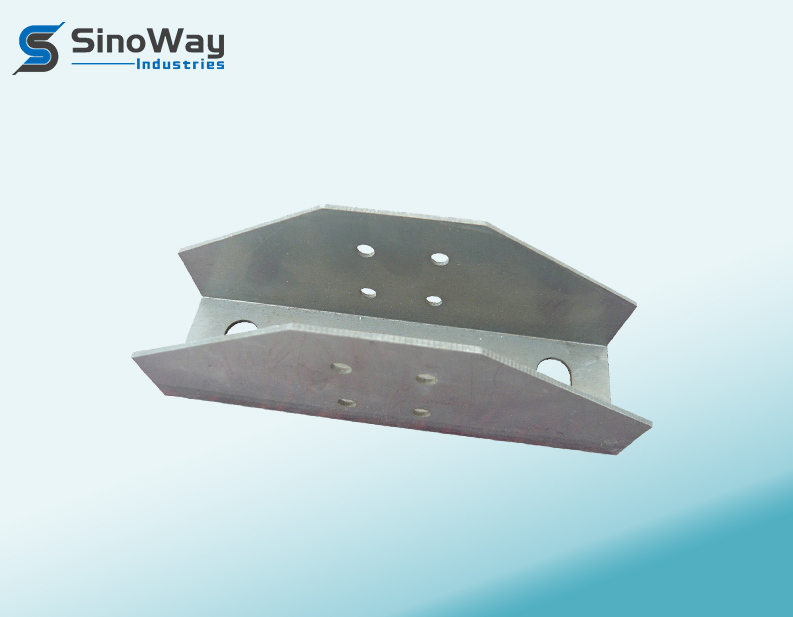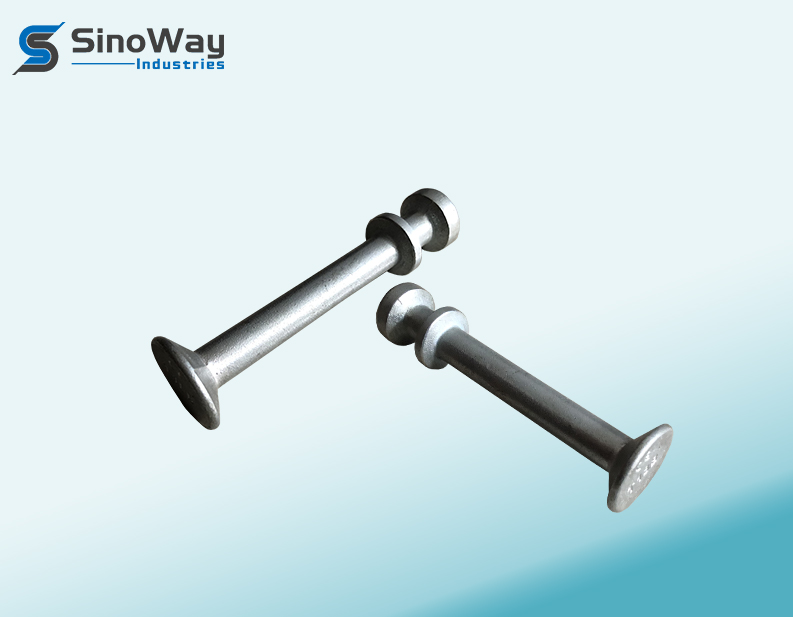Sheet metal bending is one of the most fundamental and versatile processes in the metalworking industry. It is used to form metal sheets into various shapes and sizes to meet specific design requirements for a wide range of applications. Whether you’re working on automotive parts, appliances, or custom enclosures, sheet metal bending provides the flexibility and precision required to produce high-quality, functional components.
At Sinoway, we specialize in sheet metal manufacturing, offering expert bending solutions that cater to the unique needs of our customers. In this article, we will guide you through everything you need to know about sheet metal bending, from the different types of bending processes to the materials used and the advantages it offers.
What is Sheet Metal Bending?
Sheet metal bending is a manufacturing process in which a flat sheet of metal is deformed along a straight axis to form a specific angle or shape. The metal sheet is placed between a punch and a die in a press brake or another bending machine, where it is subjected to force until it reaches the desired angle or shape.
The bending process can create simple or complex geometries, and it is often used in combination with other processes like punching, laser cutting, and welding to produce finished parts for various industries, such as automotive, aerospace, electronics, and construction.
Key Applications of Sheet Metal Bending:
- Automotive Components: Body panels, brackets, frames, and chassis parts.
- Electronics Enclosures: Cases and covers for devices like computers, printers, and HVAC units.
- Appliance Manufacturing: Parts for refrigerators, washing machines, and other home appliances.
- Construction: Roofing materials, ventilation ducts, and custom architectural elements.
Types of Sheet Metal Bending
Sheet metal bending involves several different techniques, each suited to specific types of bends, geometries, and materials. At Sinoway, we use state-of-the-art machinery and advanced techniques to achieve precision bends with minimal tolerance variations.
1. V-Bending
V-bending is the most common form of sheet metal bending and involves placing the sheet metal between a punch and a V-shaped die. As the punch is pressed down, the sheet metal is bent into the shape of the die.
Advantages of V-Bending:
- Simple and Cost-Effective: Ideal for high-volume production with minimal setup time.
- Versatility: Suitable for a wide range of materials and thicknesses.
- Precision: Allows for accurate bends with consistent results.
V-bending is typically used for parts like brackets, frames, and enclosures where a precise angle is required.
2. Air Bending
Air bending is a more flexible process where the sheet metal is not forced into a specific die shape. Instead, the punch pushes the material down, and the metal “springs back” after being released. The amount of springback is calculated to ensure the correct bend angle.
Key Benefits of Air Bending:
- Lower Tooling Costs: Since no specific die shape is needed, air bending can be more economical.
- Flexibility: Suitable for making bends at different angles without needing multiple dies.
- Faster Setup: Requires fewer changes in tooling, making it quicker for high-production runs.
This technique is ideal for making shallow bends and is commonly used in the production of sheet metal enclosures and components with less stringent dimensional requirements.
3. Edge Bending
Edge bending involves bending the edge of a sheet metal part over a die, typically at a 90-degree angle. This process can be performed with either a press brake or a specialized bending machine.
Advantages of Edge Bending:
- Strong Joints: Suitable for parts that require stronger joints or edges.
- High Precision: Allows for tight tolerances and precise bends.
- Simple Setup: Requires minimal tooling, making it efficient for small production runs.
Edge bending is commonly used for creating simple structural components, such as frames and supports, that require a sharp, precise bend.

4. Rotary Bending
Rotary bending is a more advanced form of sheet metal bending that involves rotating the sheet metal around a bending tool. This allows for more complex shapes, including curved or cylindrical parts.
Key Benefits of Rotary Bending:
- Creates Complex Shapes: Ideal for producing parts with continuous curves or bends.
- Minimal Distortion: Helps reduce material deformation that may occur in other bending methods.
- High-Speed Production: Suitable for high-volume production with fast cycle times.
Rotary bending is often used in the automotive and aerospace industries to create parts with curved or cylindrical shapes, such as exhaust systems or aircraft body panels.
Materials Used in Sheet Metal Bending
The choice of material plays a significant role in the bending process, as different metals have varying properties that affect the bending angle, strength, and springback. At Sinoway, we work with a wide range of materials to provide custom bending solutions for various applications.
Common Materials for Sheet Metal Bending:
1. Steel
- Mild Steel: The most common material used for bending due to its malleability and durability.
- Stainless Steel: Corrosion-resistant and ideal for applications where hygiene and durability are critical.
- Carbon Steel: Offers high strength and is commonly used in structural applications.
2. Aluminum
- Lightweight, corrosion-resistant, and easy to form, making it ideal for applications in the automotive and aerospace industries.
3. Copper
- Known for its excellent electrical conductivity, copper is often used for electrical components and heat exchangers.
4. Brass
- Used in decorative items and plumbing, brass offers good strength and corrosion resistance.
Considerations for Material Selection:
- Thickness: The thickness of the sheet metal impacts the bending force required and the bend radius.
- Material Hardness: Harder materials require more force and may cause higher levels of springback.
- Ductility: Materials with higher ductility bend more easily without cracking or breaking.
The Bending Process: Step-by-Step
The sheet metal bending process involves several steps, from preparing the material to performing the actual bending. Understanding these steps is crucial to ensuring the process is performed efficiently and accurately.
Step 1: Material Preparation
Before bending, the material is selected and cut to the desired dimensions. Depending on the part’s complexity, additional processes like punching, laser cutting, or water jet cutting may be used to create holes or outlines.
Step 2: Tooling Setup
The appropriate punch and die are selected based on the required bend. The punch is aligned with the die, and the sheet metal is placed on the machine bed. The machine settings are adjusted based on the material’s thickness, type, and the desired angle of the bend.
Step 3: Bending
The press brake or bending machine is activated, and the punch presses down on the material to form the bend. The material is bent until it reaches the specified angle or shape.
Step 4: Quality Control
After the part is bent, it is inspected for dimensional accuracy and visual defects. Any deviations are corrected, and the part is either re-bent or scrapped.
Step 5: Post-Bending Processes
Once the bending process is complete, parts may undergo additional operations such as deburring, welding, or surface treatment (e.g., powder coating or anodizing) to enhance their strength, appearance, or corrosion resistance.
Advantages of Sheet Metal Bending
1. Cost-Effective Production
Sheet metal bending is a highly efficient process, especially for high-volume production runs. The relatively low cost of materials, coupled with the ability to produce parts quickly, makes it an economical choice for many industries.
2. Versatility in Design
With the ability to bend sheet metal into a wide variety of shapes and angles, sheet metal bending provides unparalleled versatility in product design. This allows manufacturers to create parts that meet specific requirements while maintaining strength and functionality.
3. Precision and Accuracy
Modern bending machines, such as the CNC press brake, ensure high precision and tight tolerances, ensuring that the finished parts meet exact specifications.
4. Strength and Durability
Sheet metal bending can be used to create components that are both strong and lightweight, making it an ideal choice for structural parts in industries like automotive and construction.
Why Choose Sinoway for Your Sheet Metal Bending Needs?
At Sinoway, we combine advanced sheet metal bending technology with years of experience to deliver high-quality parts that meet the specific needs of our customers. Our state-of-the-art machinery, precision tools, and skilled technicians ensure that every part we produce is accurate, durable, and made to your exact specifications.
Whether you’re looking for simple bends or complex shapes, Sinoway offers the expertise and resources to handle your most challenging sheet metal bending projects. Our commitment to quality and customer satisfaction makes us a trusted partner for industries across the globe.
Conclusion
Sheet metal bending is an essential process in modern manufacturing, offering flexibility, cost-effectiveness, and high precision. By understanding the various bending techniques, materials, and processes, manufacturers can ensure they select the best solution for their needs. At Sinoway, we provide expert sheet metal bending services, ensuring that every part meets the highest standards of quality and precision. If you’re looking for reliable sheet metal bending solutions, Sinoway is your trusted partner for all your manufacturing needs.





